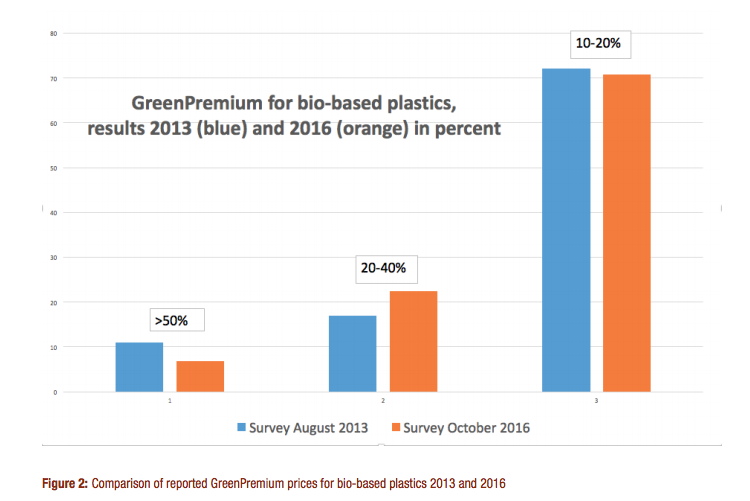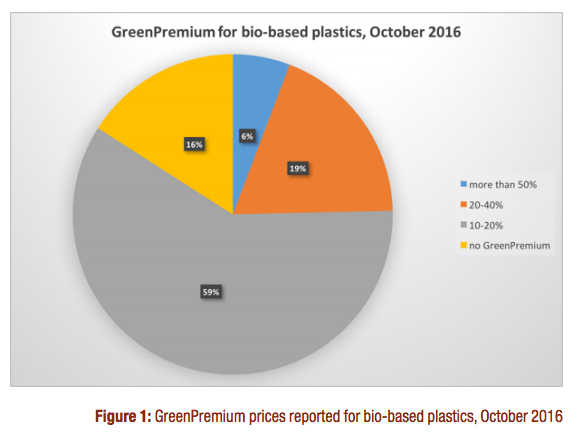Germany-based Nova Institute is currently conducting an ongoing number of surveys on green premium prices along the value chain of bio-based products on behalf of the European project BIOFOREVER. Green Premium is defined by the survey as “the additional price a market actor is willing to pay for the additional emotional performance and/or the strategic performance of the intermediate or end product the buyer expects to get when choosing the bio-based alternative compared to the price of the conventional counterpart with the same technical performance.”
The first survey conducted in October 2016 focused on bio-based plastics carried out among various LinkedIn groups related to bio-based plastics (members numbered to around 79,000. Nova Institute compared its initial findings with its survey done in 2013. One particular question, “Which premium extra price would you or your customers be willing to pay?”, led to a similar results between the 2013 and 2016 conducted surveys as seen in the figure below:

Meanwhile, Nova Institute also contacted more than 100 person within the bioplastics sector, and out of this 69 experts participated in the 2016 survey mainly from companies producing and/or marketing bio-based plastics, industrial associations and consultants of this market area.
Almost 85% of the experts report GreenPremium prices for bio-based plastics. Most of the participants (60%) considered the GreenPremium to range between 10-20%, almost 20% indicated a price premium of 20 up to 40%. About 6% of the respondents see a willingness to pay even more than 50% for bio-based plastics.

Nova Institute concluded in this first survey that the broader audience in the market still viewed bio-based polymers positively enough to obtain a green premium price, and the willingness to pay green premium has not reduced over the last 3 years, and even grown in the medium category of 20-40%. Before the survey was implemented, Nova Institute noted that a range of experts had expressed the opinion that the willingness to pay green premium prices would have decreased since 2013 due to the fact that bio-based plastics are not that new and innovative anymore, and that certain concerns might had impacts on the green image (e.g. food security, direct/indirect land use changes, sustainability).
A more detailed survey is being launched and readers of the blog are being invited to participate through this link: http://nova-institut.de/survey/index.php/541725




